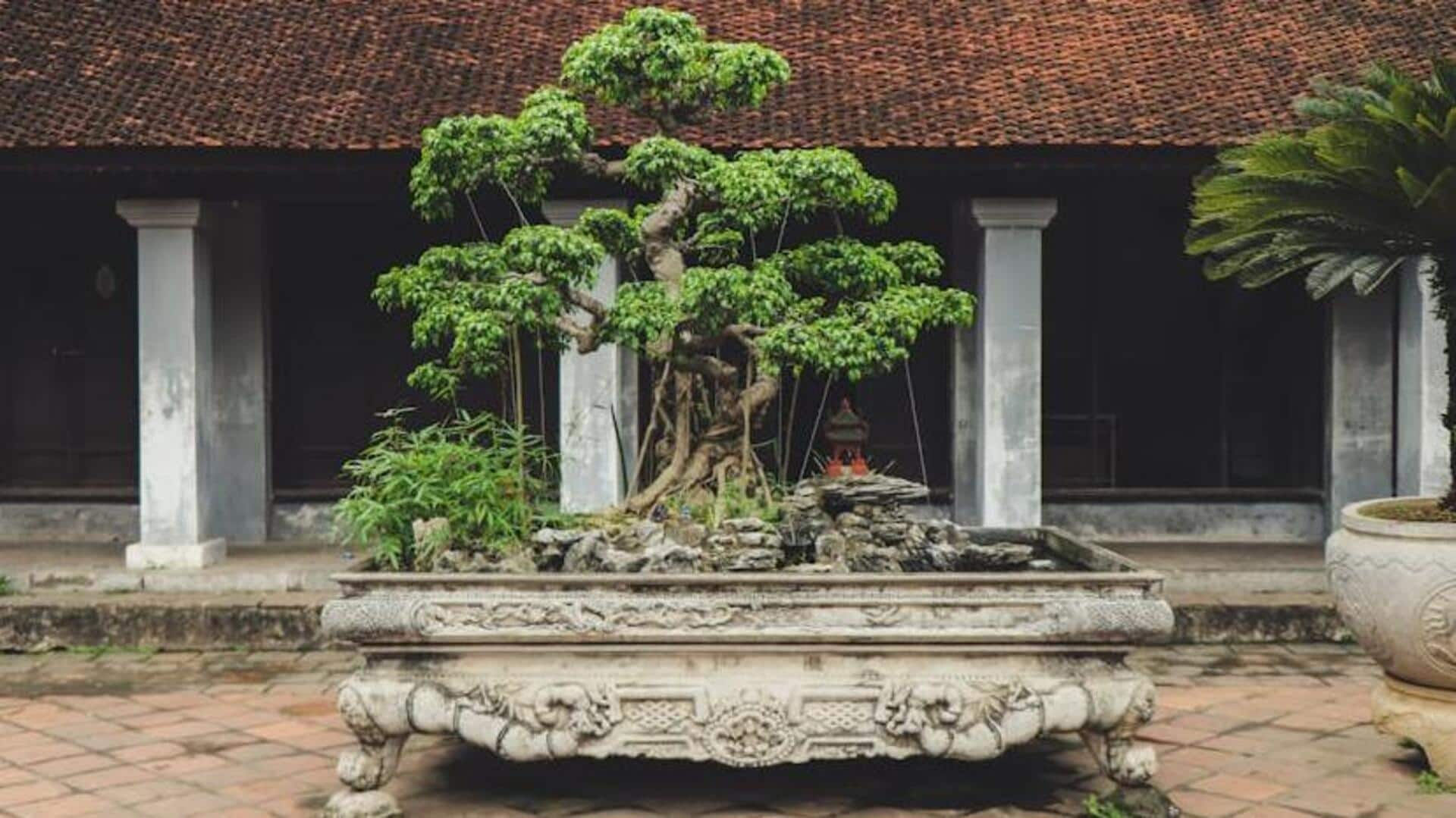
How to grow bonsai like a pro
What's the story
Bonsai gardening is the ancient art of growing miniature trees.
It's not just about cutting and shaping; it's about understanding the harmony between growth and restraint.
Our guide provides insights into choosing the right tree, essential tools, watering techniques, and maintenance tips for beginners.
Begin your journey in crafting these living sculptures with our assistance.
Selection
Choosing your bonsai tree
Choosing the right tree is key to successful bonsai gardening.
Start with hardy species: Juniper, Ficus, or Chinese Elm are great choices for beginners.
They're tough, forgiving of mistakes, and adapt well to different conditions.
Consider your climate: Pick a tree that matches your climate zone and whether you want to keep it indoors or outdoors.
Tools
Gathering essential tools
Having the proper tools is vital for bonsai care.
A good pair of pruning shears, wire cutters, and a small rake are indispensable. These tools allow you to shape your bonsai precisely while preventing harm.
Additionally, a turntable is beneficial for rotating your bonsai, ensuring you can easily reach all sides during maintenance.
Anticipate spending approximately $50-$100 for a basic set of quality tools.
Watering
Watering techniques unveiled
Watering is probably the most crucial part of bonsai care.
Unlike typical houseplants, you can't just let bonsais get bone dry or keep them constantly soggy.
Ideally, you should water thoroughly once the topsoil looks dry but before the whole pot dries out completely.
This could mean watering every day during hot summer months or much less often in winter.
Pruning
Pruning like a pro
Pruning is key to keeping your bonsai looking sharp and training new growth to go where you want it.
Always prune with intention; haphazard snipping can damage both the health and beauty of your tree.
For most trees, spring is the ideal time for major structural pruning as they're gearing up for their strongest growth.
Repotting
Repotting essentials
Repotting is crucial as it prevents your bonsai from becoming root-bound and provides fresh nutrients through the introduction of new soil.
Most young trees should be repotted every two years. However, older trees can go a bit longer between repots - usually three to five years, depending on the growth rate and species.
Remember to always use bonsai-specific soil, which ensures good drainage while retaining sufficient moisture.